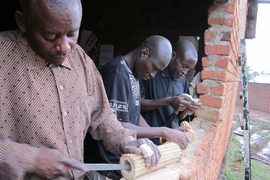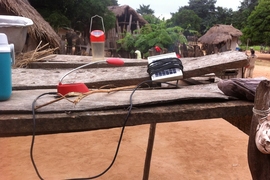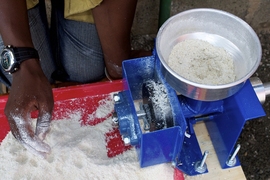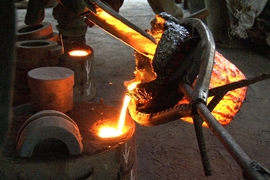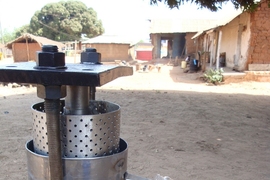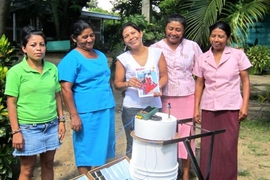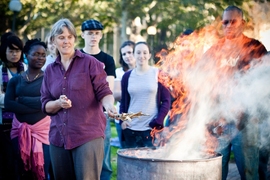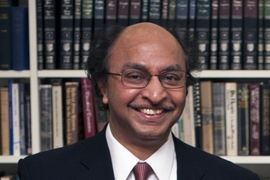MIT will receive up to $25 million in funding from the United States Agency for International Development (USAID) as part of a new five-year project intended to fight poverty by developing and evaluating useful technologies for communities around the globe.
“People here really care about doing something for the world’s poor,” says Bish Sanyal, the Ford International Professor of Urban Development and Planning in MIT’s Department of Urban Studies and Planning (DUSP), who is one of the leaders of the Institute’s participation in the project.
MIT’s role in the new program will involve two related but distinct enterprises: The Institute’s D-Lab will help lead a consortium of higher-education institutions in creating the International Development Innovation Network (IDIN), which aims to foster and provide structure for technological innovation in developing countries. The Comprehensive Initiative on Technology Evaluation (CITE) — which DUSP and six other groups within MIT will help develop — will assess technologies intended to alleviate poverty and determine which will have the most impact.
“We were very excited when we heard about this grant,” says D-Lab founder Amy Smith, a senior lecturer in MIT’s Department of Mechanical Engineering. The USAID backing, she adds, represents “an effort to promote local innovation and to increase the problem-solving and creative capacities of communities around the world, so that people are solving problems [themselves] rather than relying on external sources.”
MIT is one of six academic institutions involved in the project, along with six nongovernmental organizations. The other academic partners in the IDIN are Colorado State University, Franklin Olin College of Engineering, the University of California at Davis, the Kwame Nkrumah University of Science and Technology in Ghana and the University of Sao Paulo in Brazil. As part of the CITE program, MIT will work with the International Rescue Committee, Mercy Corps, Oxfam America, Partners in Health, UNICEF and the World Food Program.
Building innovation networks
The IDIN portion of the program will involve, among other things, 12 international design summits to look at technologies helping local development, along with the building of eight Innovation Hubs globally to act as centers for technological development. IDIN will work on innovations in a wide variety of areas, including agriculture, clean drinking water, improvement of power sources in rural areas and health-care projects.
A crucial part of the IDIN’s work is the linkage of technologists from around the world, sometimes through intensive, monthlong workshops that Smith has developed.
“A lot of time people don’t have the resources or training to engage in these activities,” Smith says. “One of the things that’s exciting about the IDIN grant is that it helps give us the capacity to build a network of innovators, and tap into that network to solve challenges.”
The CITE project, on the other hand, will involve the development of rigorous evaluation methods for new technologies — aiming to address the problem of promising innovations that do not necessarily take hold as intended in developing countries.
“Our problem is not simply the supply of technological solutions,” Sanyal says. “The problem is that the solutions are not assessed.” As a result, he notes, funding for global development has not always been guided toward the most effective solutions.
The CITE program will evaluate technologies along three dimensions, Sanyal adds: suitability, to see if innovations match the needs of the poor and perform according to technical specifications; scalability, to see if innovations can be disseminated broadly; and sustainability, to see if technologies can be provided over the long term, considering resource and institutional constraints in developing countries.
Sanyal says that by developing “a three-pronged methodological assessment that is really useful,” the CITE project could provide a system of technological evaluation “that leads to better innovations.”
An interdisciplinary effort
The USAID program also helps provide long-term structure for some of MIT’s expansive efforts to encourage innovation and growth in developing countries.
Institute centers, departments and schools participating in the USAID program are DUSP, the D-Lab, the MIT Sloan School of Management, the Center for Transportation and Logistics, the Sociotechnical Systems Research Center, the Department of Mechanical Engineering and the Public Service Center
“With this team, we have a chance to look at this problem in a multidisciplinary way, and that’s the real power of what we’re trying to do here,” says Derek Brine, a DUSP graduate and mechanical engineer who will be managing MIT’s participation in the USAID program.
The project will formally launch with multiple events organized by USAID in Washington this week, including one featuring Secretary of State Hillary Clinton. USAID, a federal agency, was founded in 1961 to promote global development.
“A lot will be expected of us,” Sanyal says.

